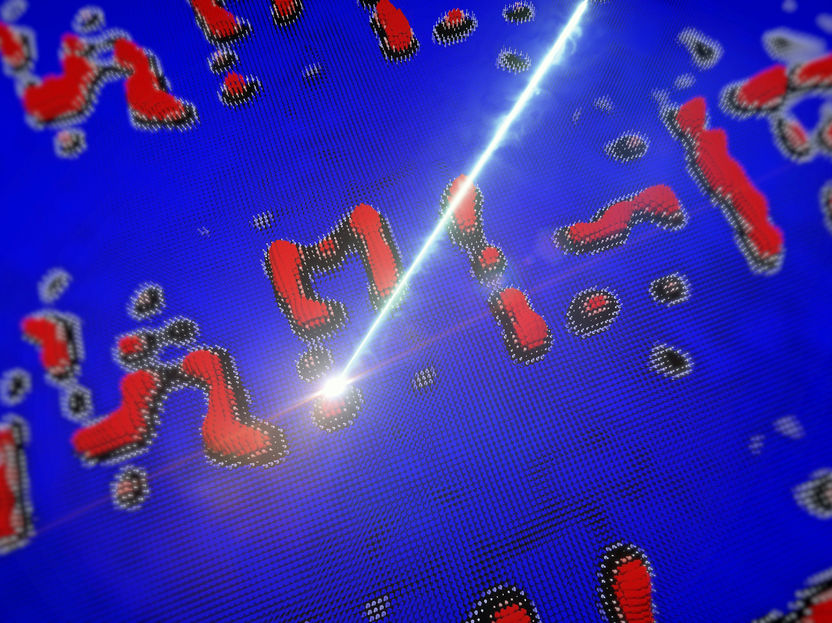Serendipity in the research field of magnetism
Scientists discover new light-matter interaction with which they can write nanometer-sized magnetic structures
Advertisement
In cooperation with Chinese researchers from the Chinese Academy of Sciences and others, German researchers from the Max Planck Institute for Intelligent Systems (MPI-IS) in Stuttgart have for the first time ever created individual skyrmions in a magnetic layer using soft X-rays. In numerous experiments, they have shown that a focused soft X-ray beam with a diameter of less than 50 nanometres can generate a vortex-like magnetic skyrmion of 100 nanometres – the smallest possible size. In so doing, the scientists are the first to discover that this interaction between light and matter exists.

A bundled soft X-ray beam with a diameter of less than 50 nanometers writes numerous magnetic vortices, which together form the term "MPI-IS"
Alejandro Posada und Felix Groß
"We do not yet know how x-ray light writes magnetic structures in matter," says Dr. Joachim Gräfe, head of the Nanomagnonics and Magnetization Dynamics research group at the MPI-IS and one of the study’s lead authors. "Since heat is not a factor in writing the skyrmions, here, it has to do with the X-ray beam itself and it's a resonant element-specific effect: we can write the atoms responsible for the magnetism directly." He and his team were thus able to write "MPI-IS", as shown in a picture (see attached image).
Skyrmions are three-dimensional structures that are 100 nanometres in size and occur in magnetic materials. They resemble small coils: elementary magnets known as spins that are arranged in closed vortex-like structures. Skyrmions are topologically protected, meaning that their shape is unchangeable. They are thus regarded as stable data storage devices.
Discovering a completely new effect is a stroke of luck that scientists experience only a few times over the course of their careers, if at all. "This is one of the most exciting skyrmion projects we have conducted in recent years," Gräfe continues. "Discovering this new effect was completely unexpected and surprising for us." Thanks to this discovery, practically anyone can now write various skyrmion arrangements in magnetic layers with an X-ray beam. This will open up several completely new fields of research. The ability to write magnetic structures with pinpoint accuracy opens up many possibilities.
The results are particularly relevant for the development and production of skyrmion processors, which store information in skyrmions and move them for processing. These processors are considered very energy-efficient and less susceptible to interference. However, this development can only take its course if skyrmions can be created precisely and accurately – and this is now possible for the first time. "Our goal is that X-rays will one day serve as a tool for determining or writing the arrangement of magnetic structures."
To make skyrmions visible, the researchers use a scanning transmission X-ray microscope: MAXYMUS is a high-resolution X-ray microscope weighing 1.8 tons. It is located at BESSY II, an 80-metre-wide synchrotron radiation source of the Helmholtz-Zentrum Berlin in Adlershof. MAXYMUS stands for "MAgnetic X-raY Micro- and UHV Spectroscope". The microscope is like a camera: much like in a slow-motion film, it follows how the structure in materials changes to the size of only a few nanometres. The scanning X-ray microscope’s wide range of applications is what attracts many of the world's leading researchers. There are far more applications for MAXYMUS than its capacity allows. “This shows how attractive working with the microscope is,” says Gräfe. “It is also great that MAXYMUS attracts many international cooperations and makes diverse joint projects possible.”






























































